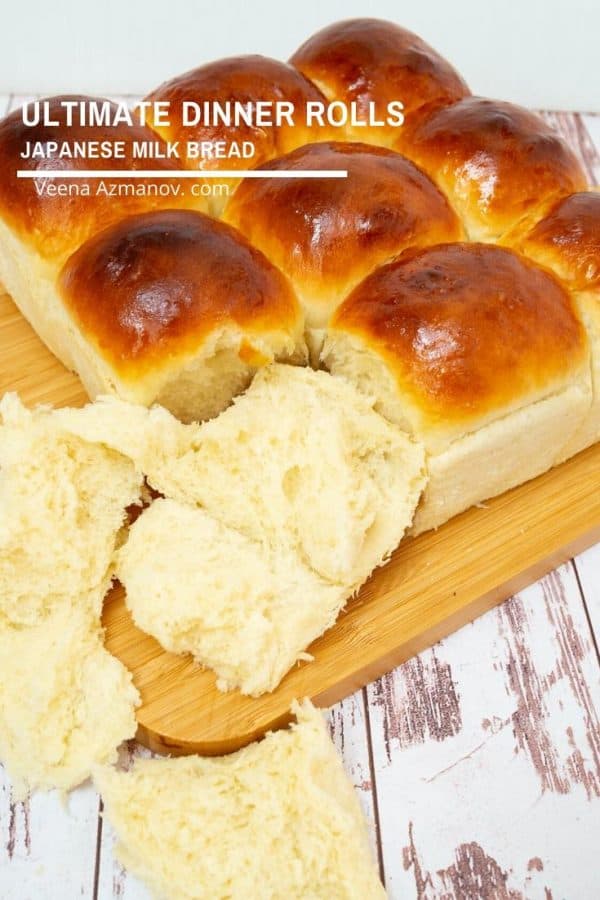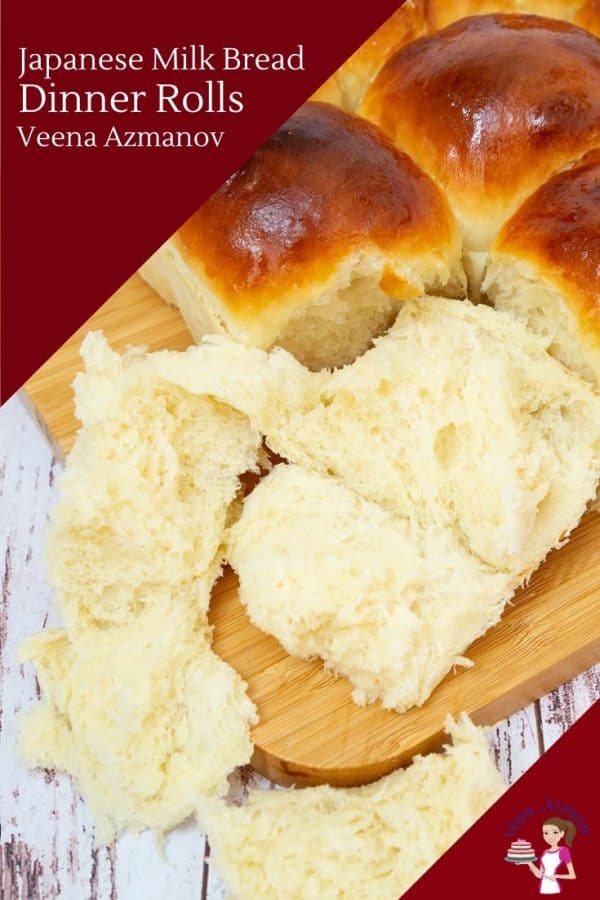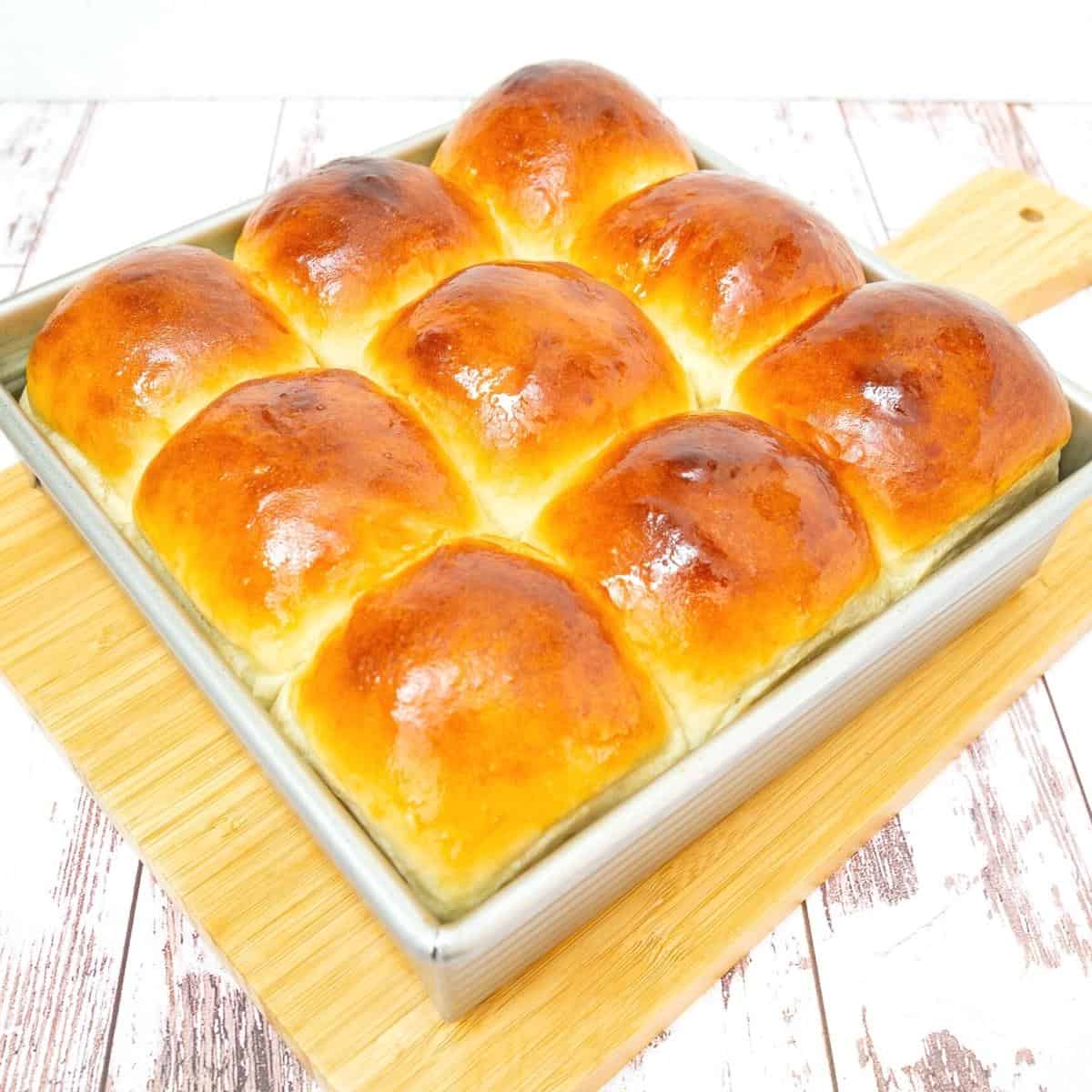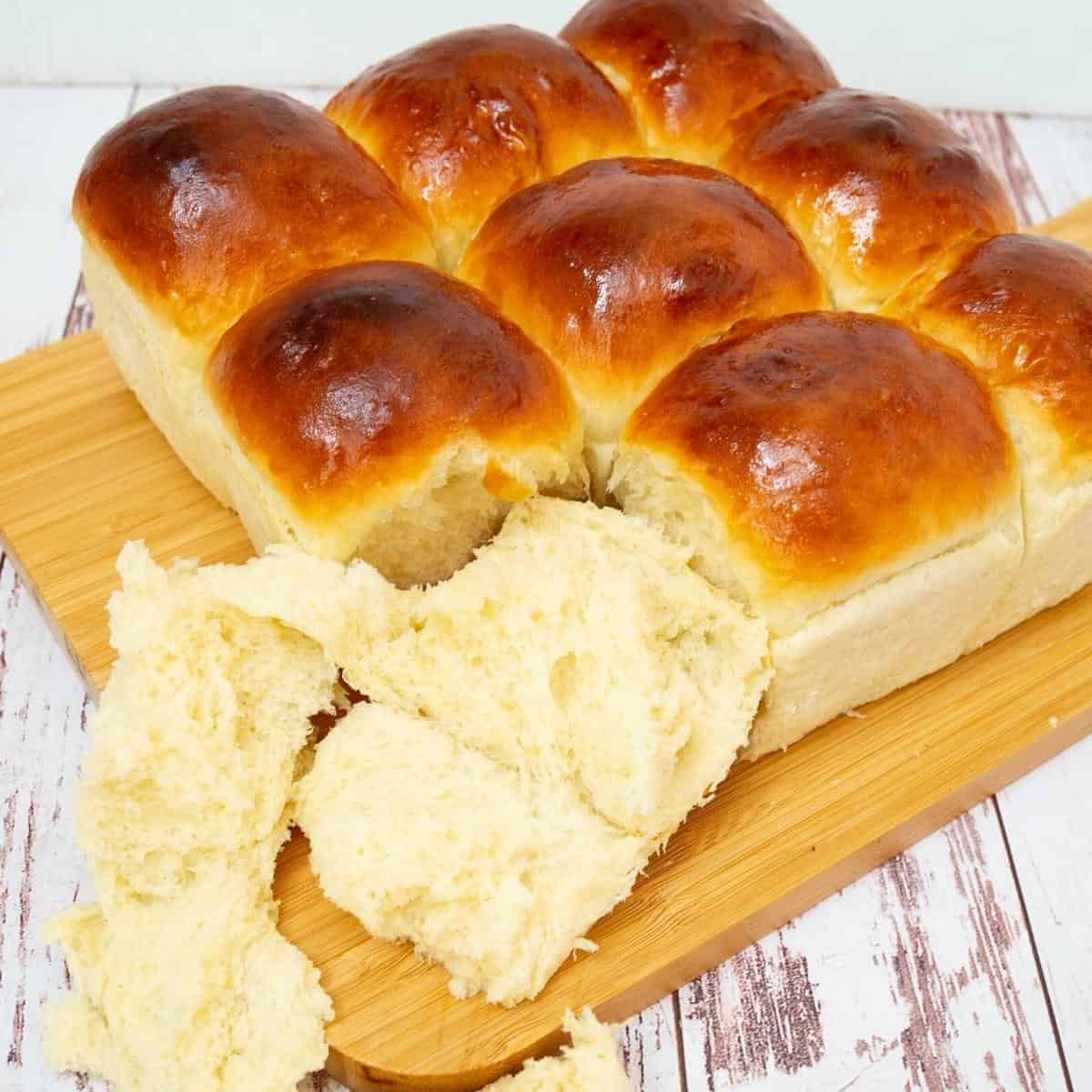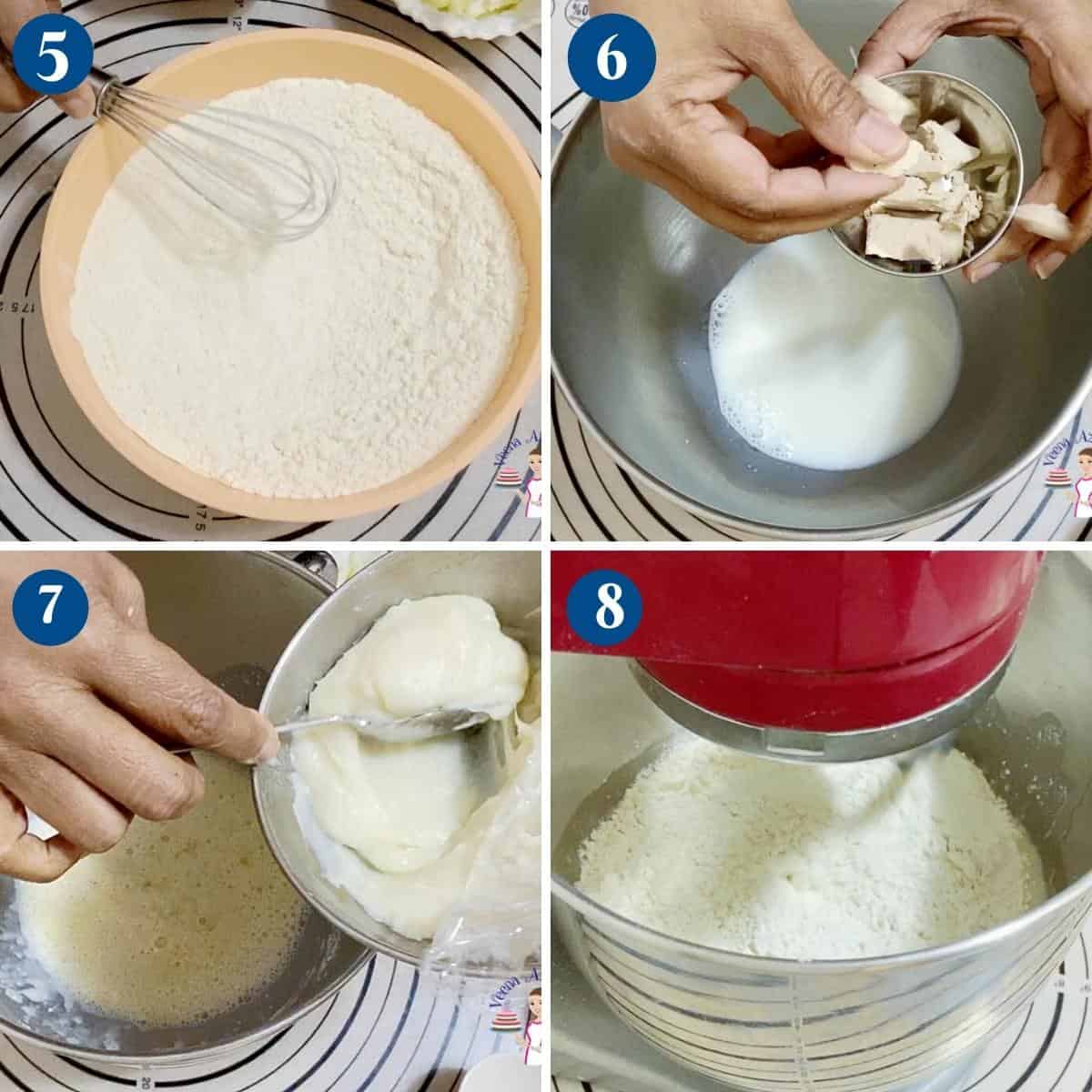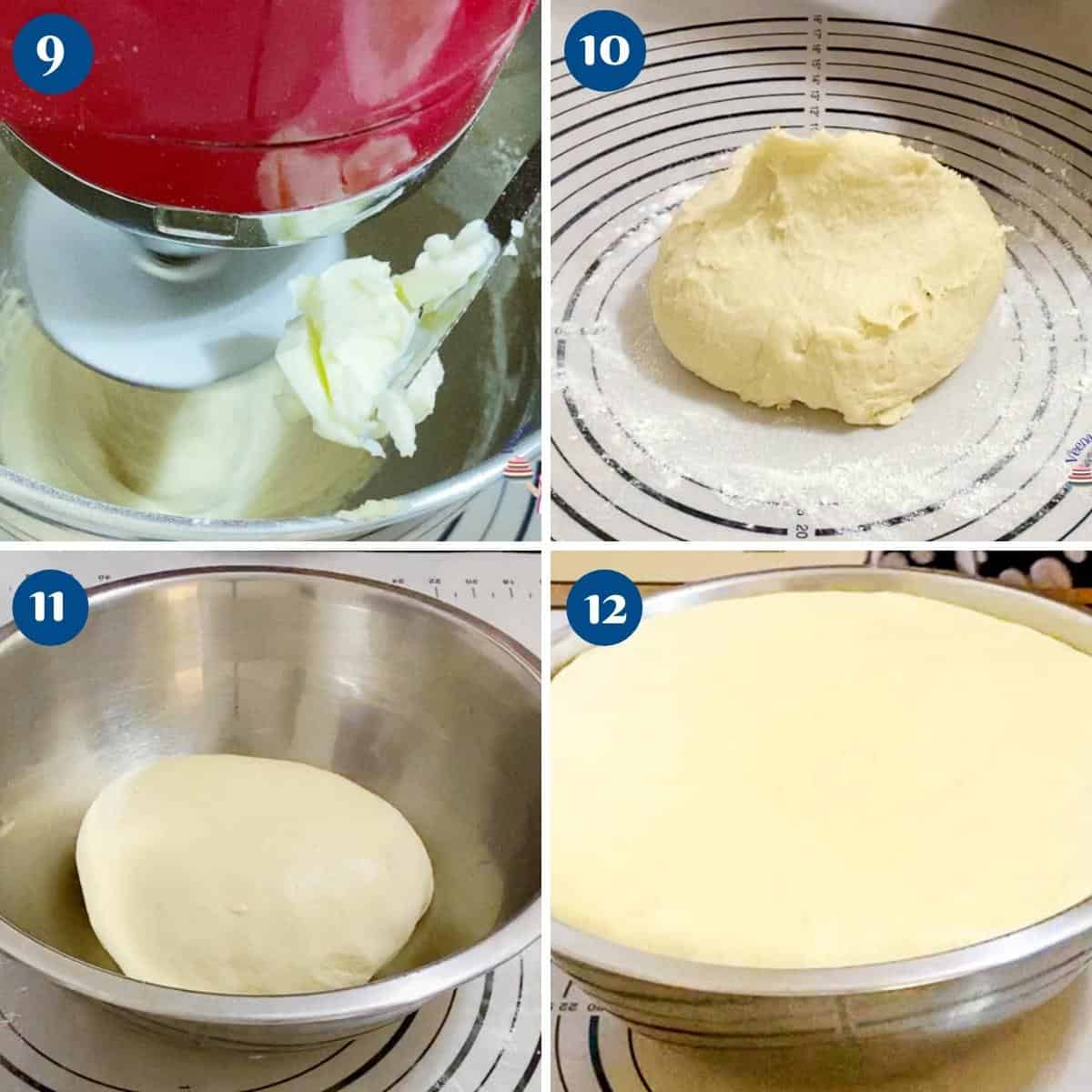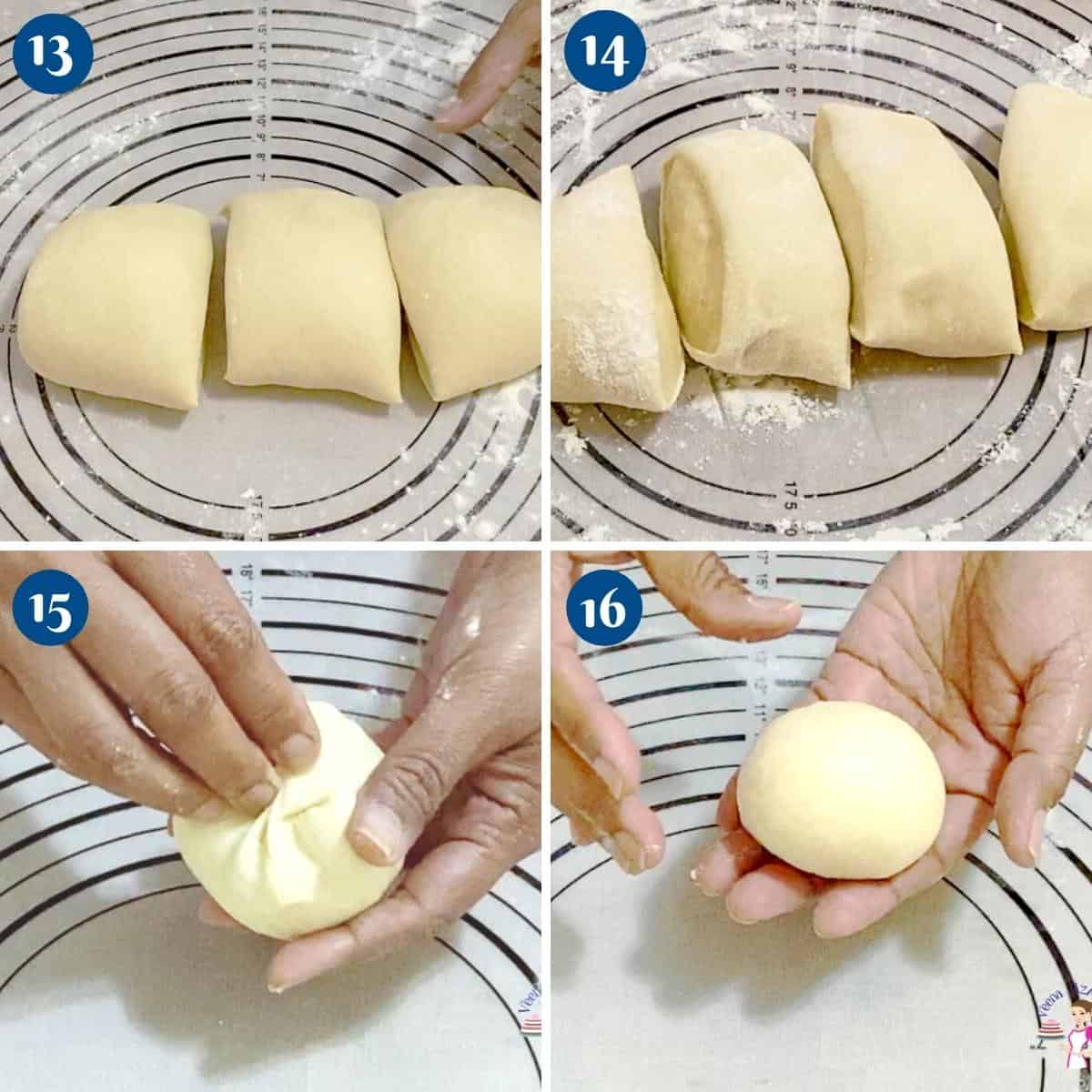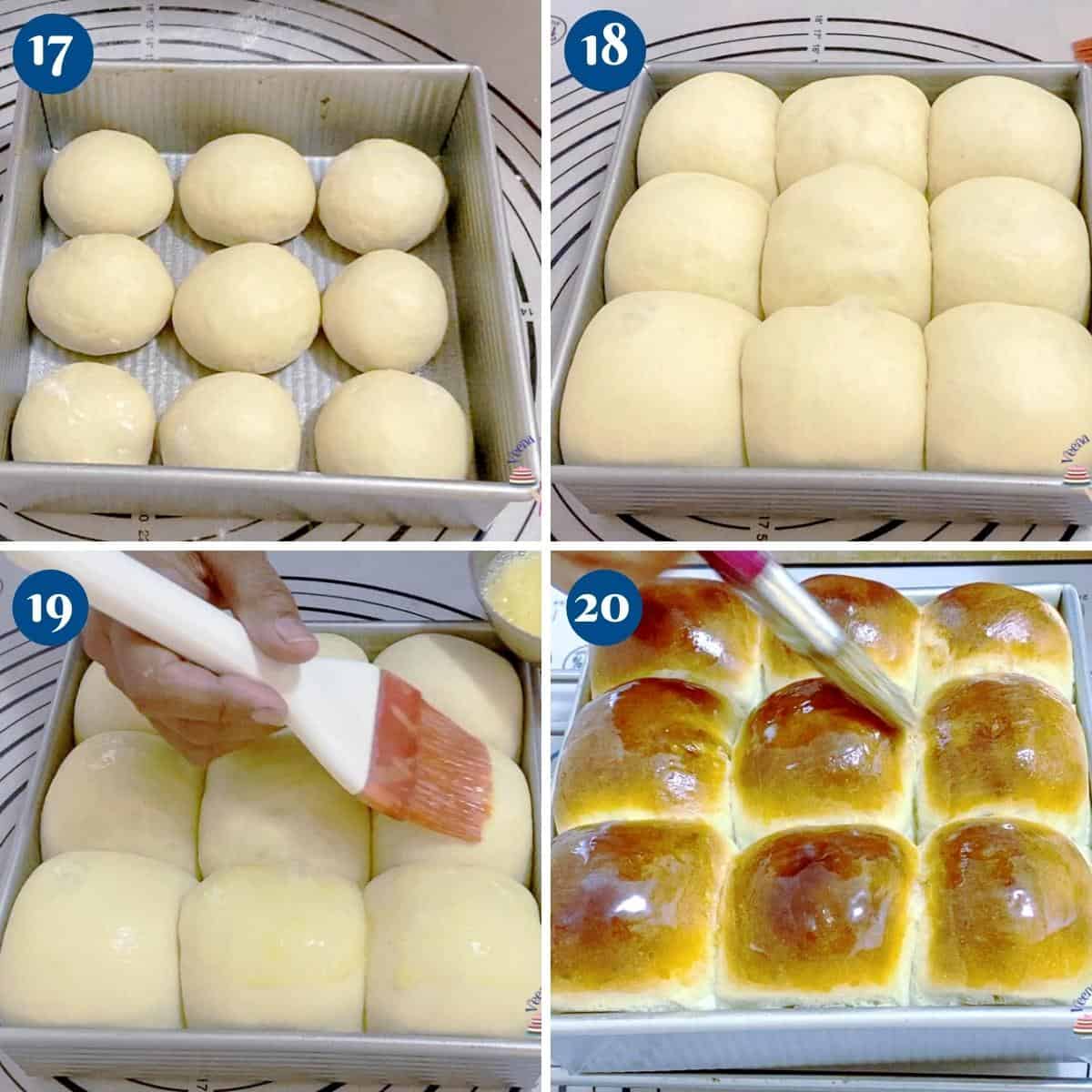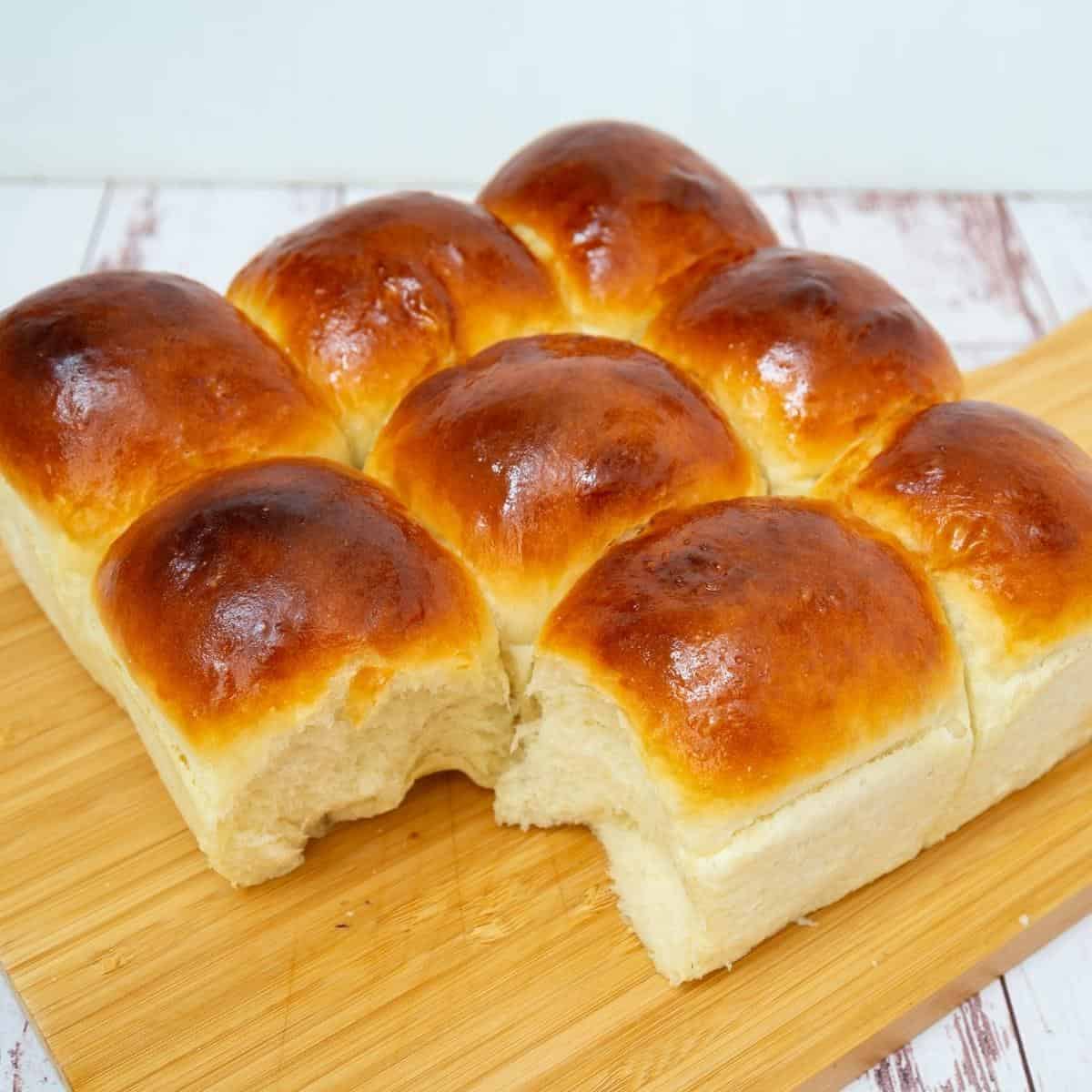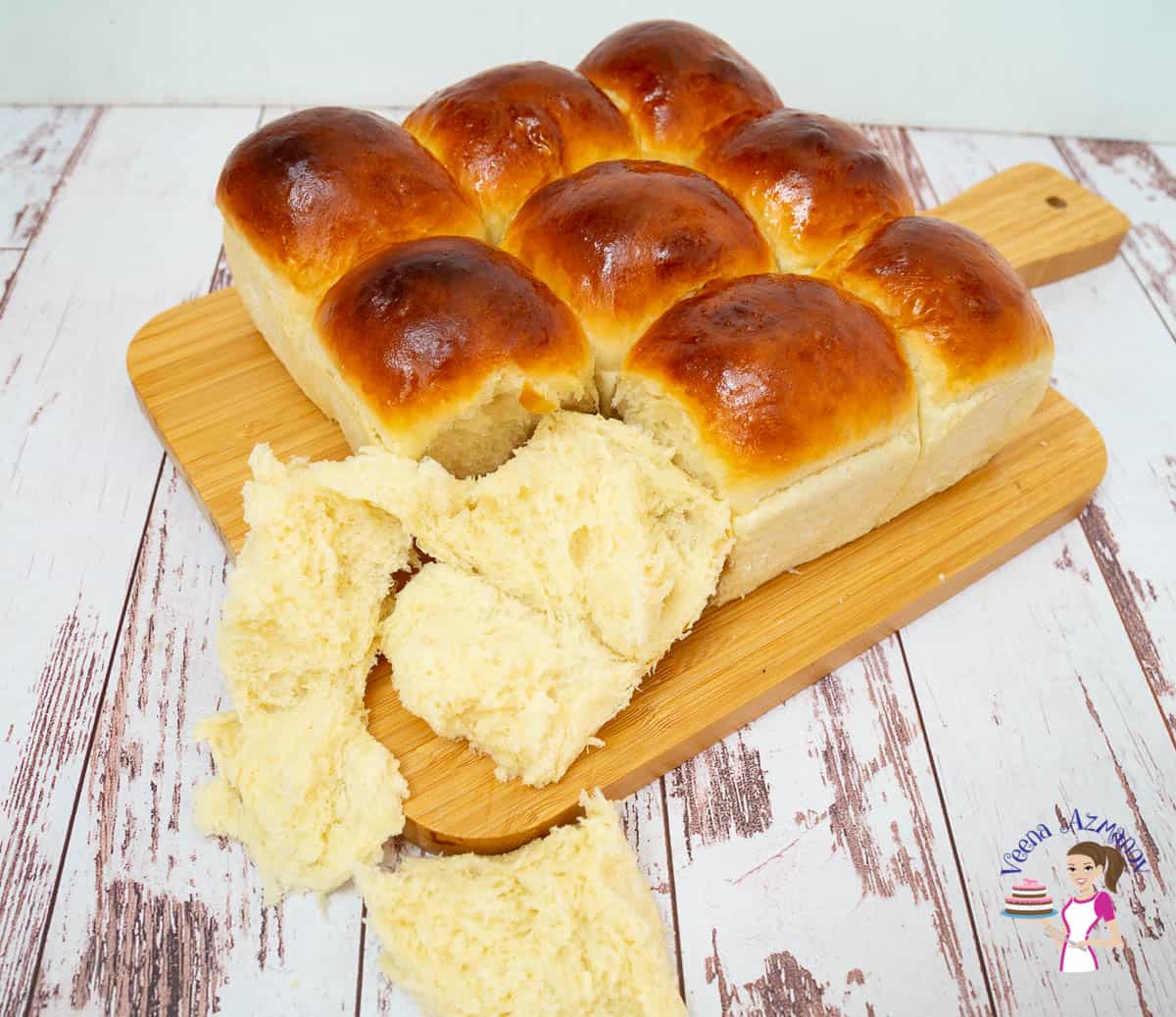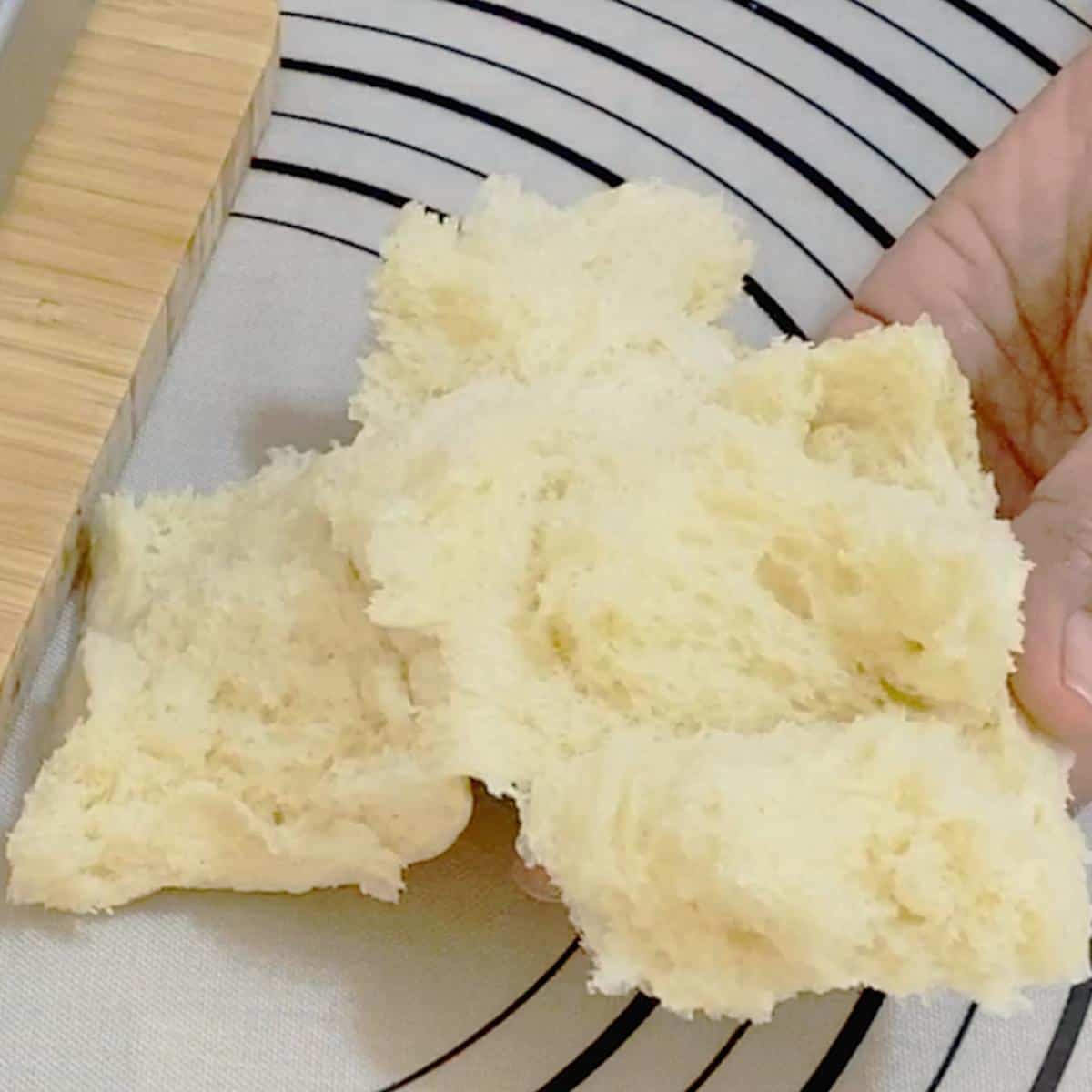I’ve shared my soft dinner rolls recipe and my no-knead soft crescent rolls, which are my absolute favorites. And today, I want to share with you yet another dinner roll recipe that is softer than those!! If you look at the video you will understand why I call these the ultimate dinner rolls. I don’t think I have ever had a bread roll softer than this. And, I am in love with this method of making bread and I must admit that recently I am tempted to add tangzhong to almost every bread I make.
Why make these dinner rolls?
The recipe is very simple and easy with one additional step compared to all other bread. That’s preparing the tangzhong. But, that too is very simple and easy. It takes no more than 3 minutes for the whole process. This process makes the lightest, airiest, and softest dinner rolls everyone will be impressed with. These rolls are perfect for everyday use and leftover also freeze beautifully. These are all-purpose rolls – Delicious on their own or, serve for breakfast with butter and jam. Alongside the main course for lunch or dinner. Of course, these also make the most amazing sandwiches!!
Step-by-step Japanese milk bread recipe
Tangzhong
In a small saucepan, combine water and flour with a whisk until no lumps. Add the milk and combine well again.Pro tip – It is very important to make sure you have no lumps as these will be difficult to remove from the dough. Place the saucepan over medium heat and cook this mixture for 2 to 3 minutes. Keep stirring constantly to prevent lumps.Pro tip – Keep it on medium-low heat. At first, the mixture will take a while to thicken, but then it does get thicker quickly. So, keep a close eye and take it off just when it reaches almost paste consistency similar to a pudding. Take it off the heat and transfer it into a small bowl or plate. Cover and let cool to almost room temperature. Make sure the plastic touches the surface of the tangzhong to prevent skin.Pro tip – Removing from the hot pan will prevent it from cooking further as we don’t want it to get lumpy.
Dough
Yeast mixture – In a bowl of a stand mixer with the dough hook attachment – add the lukewarm milk (no warmer than 110 F) and the yeast. Combine well with a whisk. Then, add the sugar, milk powder, egg, and cooled tangzhong. Combine – Add the flour and salt. Turn the mixer on medium-high speed for 2 to 3 minutes until all the flour is well incorporated.Pro tip – Scrape the sides of the bowl well to ensure all the flour is well incorporated and do not add more flour yet. Knead – Continue to knead on medium speed for 8 to 10 minutes. Then, add the butter and continue to knead for 5 to 8 minutes more until you have a soft, smooth, and elastic dough.Pro-tip – avoid the temptation to add more flour. We want soft, light, and fluffy rolls, and this is only possible when the dough is soft, elastic, yet slightly sticky
Bowl – When the dough is soft and shiny, but still slightly sticky shape it into a ball. Place the dough in an oiled bowl seam side down. Coat the surface with oil to prevent drying. Cover with a clean kitchen cloth or plastic wrap. Rise – Leave in a warm place. Let rise for 60 to 90 minutes until doubles in volume.Pro tip – In winter, you may need 90 minutes or more. But in summer, the dough may double in 45 minutes. If you can’t attend to it at that moment, de-gas, reshape, and let double in volume again.
Punch – When the dough is double in volume transfer it to a well-dusted floured surface. Punch down and reshape into a ball. Then roll it into a small log.Pro tip – At this point, there is no need for additional flour. So use a light dusting of flour. Divide – Using a dough scraper divide this log into three portions and then each of those portions into 3 again. This should give you 9 dinner rolls.Pro tip – The odd number 9 is because we are using a square baking pan. You can also divide into 8 medium or 12 small rolls, using an 8-inch round or rectangle sheet pan.
How to shape dinner rolls
Shape – Hold each piece of dough in your hand and gather all the seams together. Pinch the seams at the bottom then place the ball on a non-flour surface while still holding it in your hand. Loosen the grip on the dough and roll it back and forth into a tight circle against the work surface. You will feel the dough become tight and smooth.Pro tip – The goal is to create a tight, smooth ball. If you overdo the rolling, you will rip the top surface which will give a rough, not smooth roll.
Proof and bake
Tray – Grease or spray a 9 x 9 square baking pan. Place the rolls in the pan. Alternatively, you can also place the rolls on a baking tray and bake them as individual rolls. Proof – Cover with a clean kitchen towel or plastic wrap and leave in a warm spot for about 45 minutes until almost double in size.Pro tip – Spray the plastic wrap with oil to prevent it from sticking to the rolls. Oven – When the rolls are almost double in volume, at about 30 minutes, preheat the oven to 375°F /190°C / Gas Mark 5 Eggwash – Brush the rolls with egg wash, milk, or creamPro tip – Egg wash is a full egg with 2 tbsp of water. An egg wash will give a nice golden brown color. If you can’t use egg, milk or cream will work just as well. Do not use oil or butter as it will create a crust.
Bake for about 22 to 25 minutes until lightly golden on top. When baked brush with melted butter. Pro tip – This is optional but adds a nice flavor and keeps the top crust soft. Cool – Take them out of the pan, cool them on a wire rack, and cover them with a clean kitchen cloth for at least 5 minutes to keep them soft.Pro tip – Do not leave the rolls in the pan for too long as the steam will make the bread soggy on the bottom. Enjoy!
Homemade Soft Classic Dinner Rolls Garlic Rolls – Dinner Rolls Whole Wheat Dinner Rolls Easy Pumpkin Dinner Rolls Parmesan Garlic Rolls
Frequently asked questions
Sun-Dried Tomatoes Olive Rolls No-Knead Knotted Rolls Soft Crescent Rolls Soft Pumpkin Crescent Rolls See all bread recipes or white bread recipes
Thank you for sharing - Save for later
Well, the water is absorbed by the flour at a high temperature and the starch is gelatinized without forming any gluten (that is why it must be cooked carefully). This allows the starch in the tangzhong to absorb far more liquid at room temperature later. That’s why when tangzhong is added to the dough, we can use more water, which in turn gives us a soft, stable yet spongy texture in the final bread loaves. Did you know you can add tangzhong to any bread to improve its consistency and texture? Yup! Today, we make dinner rolls, but you can use this to make almost anything. Try my Shokupan sandwich bread, softest burger buns, or even cinnamon rolls.

